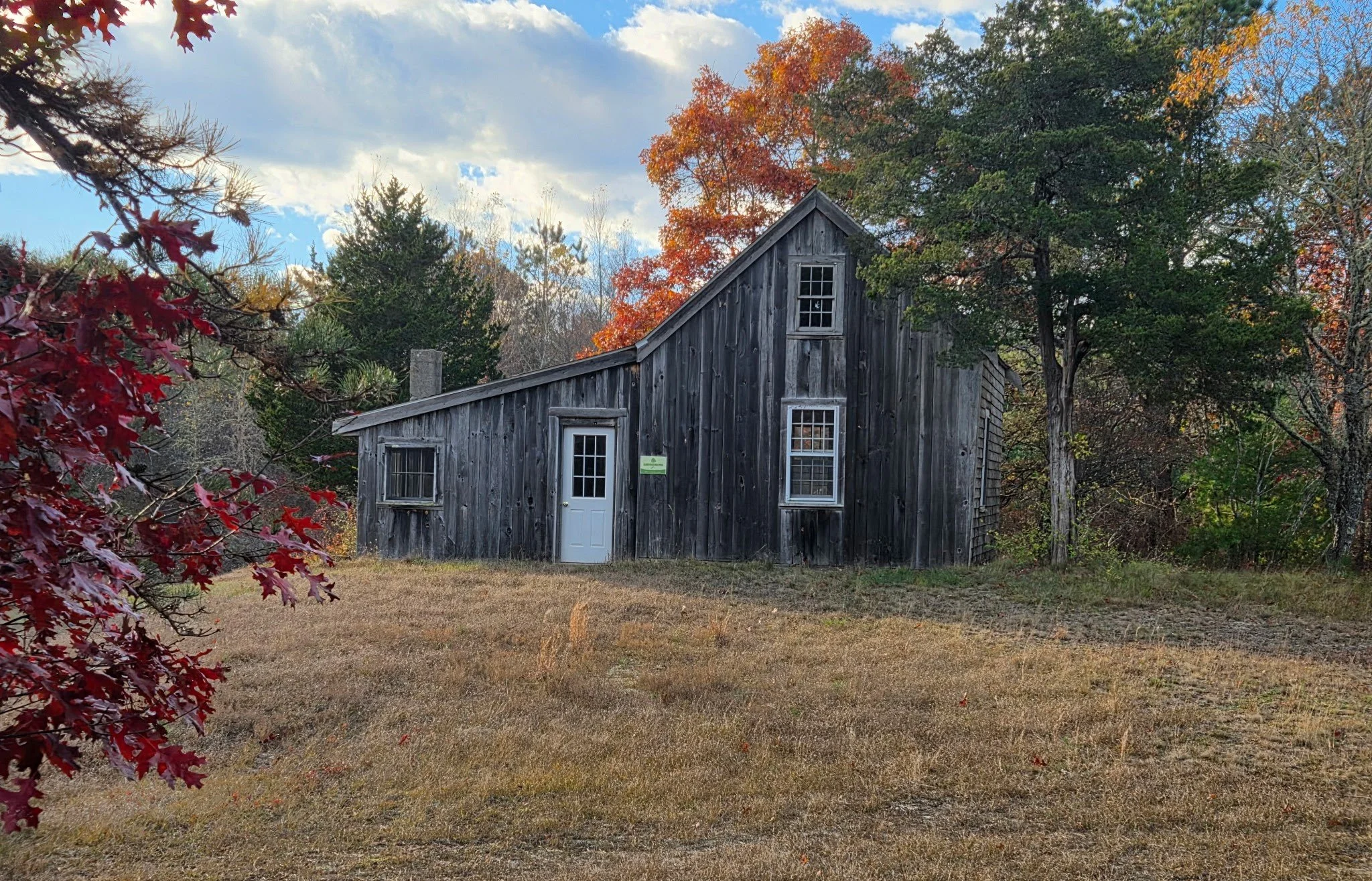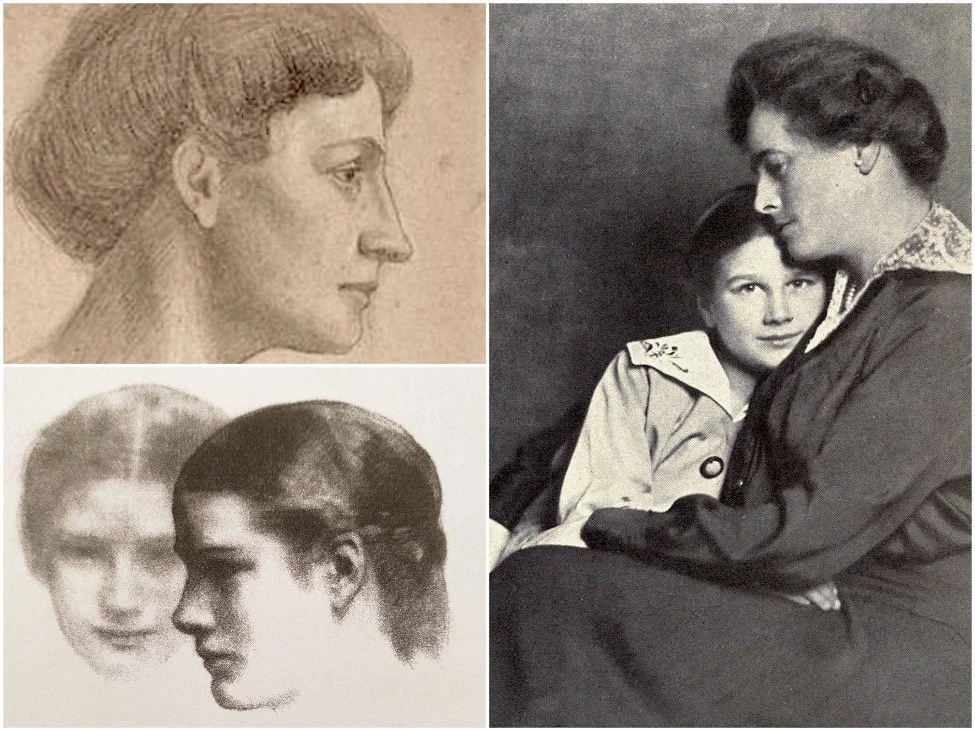What’s New at Wildlands
Human History of Wildlands: Old Field Pond Preserve
The cranberry shack at Old Field Pond Preserve once housed the bog supervisor.
By Skip Stuck, Key Volunteer
Old Field Pond Preserve is a 145-acre property on Bournedale Road in the town of Bourne. It boasts a wide variety of features—ponds, fields, wetlands, and forests. Wildlife including waterfowl, deer, coyotes, small game, and endangered northern red-bellied turtles are abundant. Rare plant life, such as the Plymouth gentian and carnivorous sundew, find refuge here. It is a truly wonderful place.
Readers who are familiar with Wildlands’ properties might never have visited or even heard about Old Field Pond Preserve. Although it is one of Wildlands’ most beautiful properties, it has no open public access, so Wildlands does not highlight it on its website. The preserve is "landlocked" by private property. Although there is no parking and visitors may not walk in on their own, there are many opportunities to enjoy the property. More on this later.
Like the Winslows in last month's history of Hoyt-Hall Preserve and the Barkers of Willow Brook Farm, Old Field Pond Preserve’s history is as much about a family as it is about a parcel of land. Whenever a family is associated with a landscape over a long period of time, their imprint is palpable. You'll see this clearly in the story of the Ingersolls.
Hike & Hops at Old Field Pond Preserve in November 2023.
Early history
As the glaciers retreated about 12,000 years ago, meltwater flowed south and created a myriad of rivers and streams in the outwash plains. Native Americans soon took advantage of the opportunities for fishing and shellfish and settled the area that they called Comassakumakanit. What was known as the Manomet River by the Natives and Monument to the English flowed from Great Herring Pond into Buzzards Bay. As its name indicates, Great Herring Pond was rich in herring, and its banks were moist and fertile to farm. The area was and still is home to the Herring Pond Wampanoag Tribe.
The Tribe continues to own 400 acres near Old Field Pond Preserve. Chamber Rock, Burying Hill, Wishing Rock, and Sacrifice Rock are all local features of cultural and historical significance to the Tribe. This year, scientists used ground-penetrating radar to locate old Wampanoag burials at Burying Hill, providing new evidence in support of the Tribe’s oral history dating back centuries. The Herring River Trail, now called Herring Pond Road, and Bournedale Road are important ancient thoroughfares still in use today.
Historical plaque at Burying Hill, near Old Field Pond Preserve in Bourne. In addition to a burial ground, the area was the site of the first meeting house for Native Americans in Plymouth Colony.
European settlement
At the mouth of the Monument River, about a mile from Old Field Pond Preserve, is the Aptuxet Trading Post, founded in 1627 by the Dutch from New York and the Plymouth Pilgrims. It is reputed to be the first such post in New England and the site of the earliest recorded use of "Wampum," beads made from quahog clam shells as currency.
As Plymouth Colony expanded south to Cape Cod, the first town to be established was Sandwich in 1637. The area now known as Old Field Pond Preserve was in the western section of town. Among its first settlers was Colonel John Bourne, patriarch of a family influential in the area for the next 250 years. In 1695, the Herring River Grist Mill was built. Timber, shipbuilding, farming, salt hay production, fishing, and glassmaking were the principal industries for the area, with cranberry production becoming increasingly important along the way.
In the 1780s, the main house on the Old Field property was built and occupied by the family of Jonathan Bourne. It was also the site of the West Sandwich post office. By the late 19th century, other businesses grew in the area, including the Holway Axe Factory and the Keith Car Works. A railroad line also served the area. The growing community soon decided to break away from Sandwich, and in 1884, the town of Bourne was incorporated.
At about this time, the area surrounding Old Field consisted of a large section of woods and farmland. It was known as Colonel Horton's Fishing Club, a private enterprise catering to the emerging summer tourist industry. Change was on the horizon. The Monument River was to disappear as work on the long-contemplated Cape Cod Canal began. Completed in 1914, the canal split Bourne in half, putting the area's fishing industry in jeopardy. So that the Cape wouldn't become an island, three bridges were built, one for trains and two for ground transport. The Bourne Bridge will soon come into play in this history.
The Ingersoll era
Kahlil Gibran’s sketches of 14-year-old Hope Ingersoll while staying at Bay End Farm in 1918. Via kahlilgibran.com.
In 1906, the fishing club was sold to the Garland-Ingersoll family, led by Mary Tudor Garland Ingersoll, who immediately transformed the 900-acre lot into Bay End Farm.
Mary and her husband were wealthy socialites. Mary was a well-known and passionate patron of the arts. She immediately set out to create a place for artists to stay, inspire each other, and create. She had prefabricated cottages built for artists of all kinds to visit, several of which are still in use today. Mary, a close friend of painter Georgia O'Keeffe, played host to many notable figures of her time, including Mark Twain and artist and writer Kahil Gibran, who wrote part of his famous book The Prophet while residing at the farm. The artist's colony flourished until the 1950s. The property was also made available to provide housing for military officers during World War I.
Postcard depicting Bay End Farm in the early 1900s.
Mary's other passion, and one carried on and championed by her daughter, Hope Garland Ingersoll, was the preservation of their farm, one of the last large properties in the area. At some point, Hope changed the name of Bay End Farm to Grazing Fields Farm. The property became well-known for its progressive land use, eschewing pesticides and herbicides, and for its livestock breeding, famous for its prize-winning Welsh ponies, Guernsey cattle, Montdale sheep, and Sealyham Terriers.
Grazing Fields Farm exists today as a horse farm on a portion of the Ingersolls’ original property.
Grazing Fields Farm operated in this manner until 1957, when Hope Ingersoll gained local and even national fame during her 25-year fight to save the property from a state highway expansion. The project’s goal was to speed up summer automobile access to the Bourne Bridge. Officials would have invoked eminent domain to break up the Ingersoll property. Hope contested the state's architectural plan and privately paid architects to design an alternative route plan. In 1982, aided by new federal environmental regulations, Hope prevailed. The story gained recognition throughout the environmental movement and in the news, including the New York Times, whom Hope told, “I think it’s true that you can fight City Hall. But you’ve got to have a lot of persistence, and help—and luck. We started this long before anyone was worried about the environment. … We have always been concerned with protecting the land.”
Hope Ingersoll. Photo courtesy of Kofi Ingersoll.
Old Field Pond Preserve
In 1983, the Ingersoll family decided to donate 145 acres in the middle of their property to Wildlands Trust so it could be protected in perpetuity. This was the beginning of Old Field Pond Preserve. The name Grazing Fields Farm applies today to the horse farm on the southeast side of Bournedale Road. The rest of the historic Ingersoll land, abutting Old Field Pond Preserve on the northwest side of Bournedale Road, has reclaimed the name Bay End Farm. Hope’s grandson, Kofi Ingersoll, owns and operates this organic produce farm. In partnership with the Ingersoll family, Wildlands uses Old Field Pond Preserve in several ways. Wildlands and Bay End Farm staff and volunteers guide hikes on the property throughout the year. The farm also provides environmental education to Wildlands’ Green Team, Envirothon Team, and other youth programs, and assists Wildlands staff in the maintenance, trail trimming, and haying of the preserve.
We hope you will join us for our next guided hike or volunteer event at Old Field Pond Preserve. Sign up for our E-News and visit wildlandstrust.org/events to stay updated on the latest opportunities to explore this special place. You will not regret it.
Kofi Ingersoll. Photo by Drew Lederman.
Learn more
Resources utilized in researching this history include:
The Herring Pond Wampanoag Tribe: herringpondtribe.org
Bourne Historical Society: bournehistoricalsociety.org
American Aristocracy: americanaristocracy.com
Grazing Fields Farm: grazingfields.com
Kahil Gibran website: kahlilgibran.com/latest/132-the-house-of-the-prophet-gibran-at-mrs-garlands-farm
"Farmer Wins 25 Year Fight over Cape Road," New York Times, 10/10/82: nytimes.com/1982/10/10/us/farmer-wins-25-year-fight-over-cape-road.html
50 Remarkable Years, 50 Remarkable People, “The Ingersoll Family,” Wildlands Trust: wildlandstrust.org/anniversary-book-blog/2024/4/9/ingersoll-family
Interview with Kofi Ingersoll, 10/31/25.
A special thanks to Kofi Ingersoll for his recollections and photos, and to Thomas Patti for editing this history.









